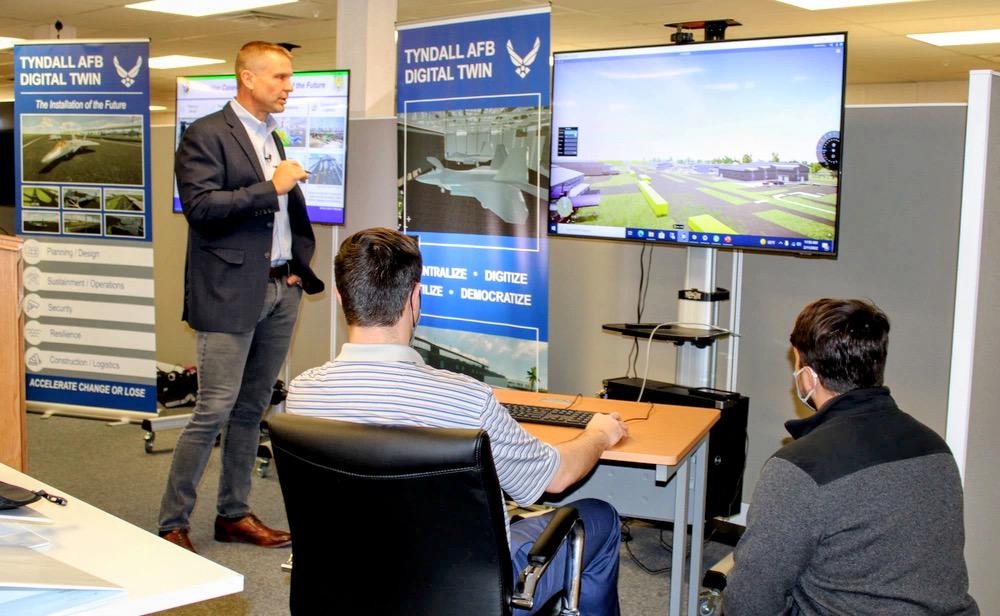Investments in Digital Twins Can Drive Transformation
Many industries have begun to explore the potential of digital twin technology to drive their top-and-bottom-line growth. This innovative technology allows organizations to evaluate different scenarios and outcomes through digital renderings so that they may address any questions or concerns virtually before executing a physical solution.
In the defense industry, digital twin technology has yet to be fully leveraged. Research shows that 61% of aerospace and defense organizations consider digital twins a strategic part of their overall digital transformation. This has resulted in a 40% jump in planned investment by aerospace and defense organizations in digital twin initiatives in just one year.
For leaders in the defense industry, news of this growing technology should be music to their ears. For example, digital twins can enable armed forces to unleash entirely new ways of training, as they can now digitally test a range of operational scenarios and enemy responses in realistic but safe simulations.
There are several use cases for digital twins in the defense industry, but there are also areas of investment that these organizations will require before they are fully able to take the leap.
With all eyes on digital twins, leaders across sectors are making plans for how to reap the benefits. While there are several benefits of digital twins primed to impact the defense sector, two are gaining prominence—immersive training and systemic performance improvement.
Immersive training is among the top use cases of the digital twin-powered industrial metaverse. Immersive training enables enterprises to train their employees in realistic, consequence-free conditions. This is especially useful for acclimating pilots, operators, soldiers and beyond to new environments without putting them in harm’s way or exposing them to any true safety risks.
For example, German arms manufacturer Rheinmetall provides augmented reality-equipped rigs for training maintenance and repair personnel that work on military transport aircraft. The rigs allow for the intense and effective training of company personnel in lifelike field conditions without needing to physically use the actual aircraft. This type of preparation is a game-changer, as it does not impact the availability and readiness of the fleet.
Improving systemic performance is essential in the defense industry and digital twins can help. Not only can the capability provide visibility into the current performance of real-world systems—and make improvement suggestions—but it also can evaluate various complex scenarios to predict performance.
The U.S. Air Force Research Laboratory (AFRL) is a prime example of this. The AFRL has developed a virtual twin of a collaborative “swarming” weapon’s system prototype as part of its weapons program. This digital twin, a combination of an asset twin and network twin, utilizes artificial intelligence (AI) and machine learning (ML) to determine improvements in the physical weapons system in near real time.
To see these use cases come to fruition, there are several areas in which defense organizations should consider making investments.

Because a digital twin can monitor and optimize its physical counterpart, any unauthorized personnel who is able to access the system could, in turn, gain control of the real-world asset.
Perhaps more than any other industry, cybersecurity is critical for defense organizations—and there is no room for error. With any digital twin, there are authorized users that are granted permission to access the associated data. Because a digital twin can monitor and optimize its physical counterpart, any unauthorized personnel who is able to access the system could, in turn, gain control of the real-world asset.
If an unauthorized user were to gain control of a defense asset, such as a weapons system, there is a clear and present danger, and the “attack surface” is increased. For this reason, defense organizations must ensure several precautions that fully protect both the real-world asset and the digital twin, including:
- Ensure active involvement of the chief information security officer (CISO): While digital twins are governed and managed by various teams, it is essential that the CISO plans and protects the entire network. Regardless of who is managing the twin and its data, the role of the CISO is of paramount importance.
- Authenticate data: Any data that the twin shares must be authenticated. This especially includes any control signals that affect the real-world asset.
- Prevent Internet-of-Things (IoT) sensor vulnerability: Any IoT device transmitting over the network must be authenticated, as the sensors on the physical twin present potential vulnerabilities.
Organizations see cybersecurity as a top capability required for developing and improving digital twins. And next to cybersecurity, 82% cited AI and ML as the second most important, especially given the high-pressure nature of the sector. In the defense industry, AI and ML, along with advanced analytics and modeling skills, are crucial assets for processing the data needed for planning outcomes and providing real-time insights. In fact, many enterprises have started developing AI education centers to accelerate AI development, use and understanding. Paired with the growing use of generative AI, it is more important than ever to educate the workforce on how to leverage AI to achieve strategic goals—and avoid the pitfalls.
The defense industry has significant and exciting opportunities for growth ahead. By scaling digital twin initiatives, defense leaders have much to gain, specifically where training and performance are concerned.
However, just because the opportunities have presented themselves does not mean that defense enterprises are ready to fully jump in. First, they must ensure that they have made firm investments in AI, ML and cybersecurity. Only then can they propel forward.
Sean Moore is a business unit leader for Aerospace and Defense, Capgemini Americas.





Comments